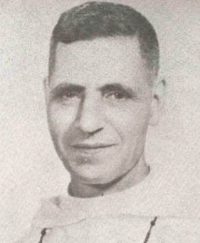Joy! Joy! The Yanks have arrived. They landed on the same place where Magellan set foot on firm land when he discovered these islands which he called St. Lazarus. The news of the landing in Leyte spread like wildfire. We took the news as probable, without reassuring ourselves of its certainty, but the exultant Filipinos believed it without a shadow of doubt. Tokyo had admitted it, although the local press still refuses to put its stamp of approval.
Gen. MacArthur and Pres. Osmeña were heard delivering messages over the radio. MacArthur announced that he had complied with his promise to return and, God willing, he would proceed with the re-conquest of the Islands. Osmeña declared that the legitimate government has been restored in this country. Reports have it that General Valdés, Soriano, Romulo and a nucleus of the exiled Philippine government has also arrived.
No one—not even the sharpest strategists—predicted where the landing was to be made. Some guessed that it would be in Mindanao, or at some gulf in Luzon, or in some island in the Visayas, but not one of them singled out the place where the landing was actually made. After the fact, everybody admitted that the Bay of Leyte, formed by Leyte and Samar, was the least guarded, least defended and most strategic point for the developing operations. Situated almost in the center of the archipelago, it is one leap from Mindanao, from Luzon, and from almost all the islands of the Visayas.
There were two questions over which the amateur strategists were heatedly debating: one was whether the attack would first be directed against Japan, Formosa, or the Philippines. The events settled this controversy. The other was whether the Allies could launch their offensive against any of these three fronts before putting an end to the war in Europe, or whether they would have to liquidate the European end of the Axis in order to bring to the Pacific sufficient transport ships, machines and forces to push through this great undertaking.
Those who held the second view felt that Japan had about half a million men in the Philippines—some had counted about a million—with the facility to reinforce that number anytime needed. America had to transport at least another million and this would mean ten million tons of shipping. This was what Tokyo said two days before the landing. But these are now Byzantine questions. What should concern us are the developments of the war.
